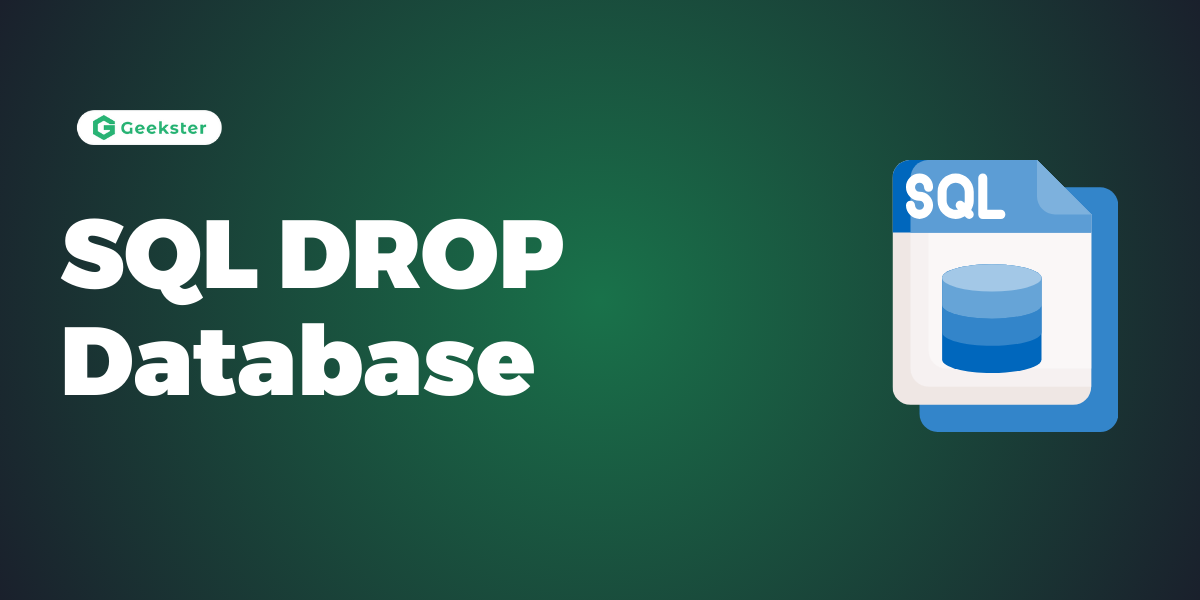In SQL, sometimes there is a need to delete or drop the database on which you are working. Deleting a database means deleting everything which includes all the data such as tables, views, indexes, schemas, constraints, etc. In order to delete a database we use the DROP DATABASE command.
We typically delete a database when it’s no longer necessary, freeing up the memory it consumes.
The SQL DROP DATABASE statement deletes an existing database along with all its associated data, including tables, views, indexes, stored procedures, and constraints.
The SQL Drop Database statement deletes the existing database permanently from the database system. This statement deletes all the views and tables if stored in the database, so be careful while using this query in SQL.
Before removing the database from the database system, it is essential to learn the following key points.
• This statement deletes all the data from the database. If you want to restore the deleted data in the future, you should keep the backup of the data of that database that you want to delete.
Syntax of Drop Database Statement in SQL
DROP DATABASE Database_Name; In this SQL syntax, we have to specify the name of the database which we want to delete permanently from the database system. We have to write the name of the database after the DROP DATABASE keyword in every example.
We can also delete multiple databases easily by using the single DROP syntax
DROP DATABASE Database_Name1, [ Database_Name2, ......., Database_NameN ] Using this statement, we have no need to write multiple statements for deleting multiple databases. We can specify all the databases by using a comma in a single statement, as shown in the above syntax.
Examples of Drop Database Statement in SQL
Example
Suppose, we want to delete the Student database with all its data from the database system so, firstly we have to check that the Student database exists in the system or not by using the following statement.
SHOW DATABASES ; If the Student database is shown in the output, then we have to type the following query in SQL for removing the Student database.
DROP DATABASE Student; If the Student database does not exist in the database system and we run the above query in SQL, then the query will show the following output.
Can't drop database 'Student'; database doesn't existConclusion
In conclusion, the DROP DATABASE statement in SQL is a powerful command for permanently deleting a database, along with all its data and schema. Caution is advised as it’s irreversible, resulting in complete data loss. Prioritize backups and ensure no valuable data remains. Verify that the database isn’t in use by other processes to avoid errors or unintended consequences.
Frequently Asked Questions
In SQL, the DROP DATABASE statement is utilized to permanently delete a database along with all its associated data and schema.
No, dropping a database is an irreversible action. Once a database is dropped, all of its data and schema are permanently deleted, and it cannot be recovered.
Yes, it’s important to ensure that you have backed up any valuable data stored in the database before executing the DROP DATABASE statement. Additionally, verify that no other processes or applications are actively using the database to be dropped.
Attempting to drop a database that is currently in use by other processes or applications may result in errors or unintended consequences. It’s recommended to ensure that the database is not being actively accessed before executing the DROP DATABASE statement.
The ability to drop a database while connected to it depends on the database management system you’re using. Some database systems may allow it, while others may not. It’s always best to refer to the documentation specific to your database management system for guidance.

